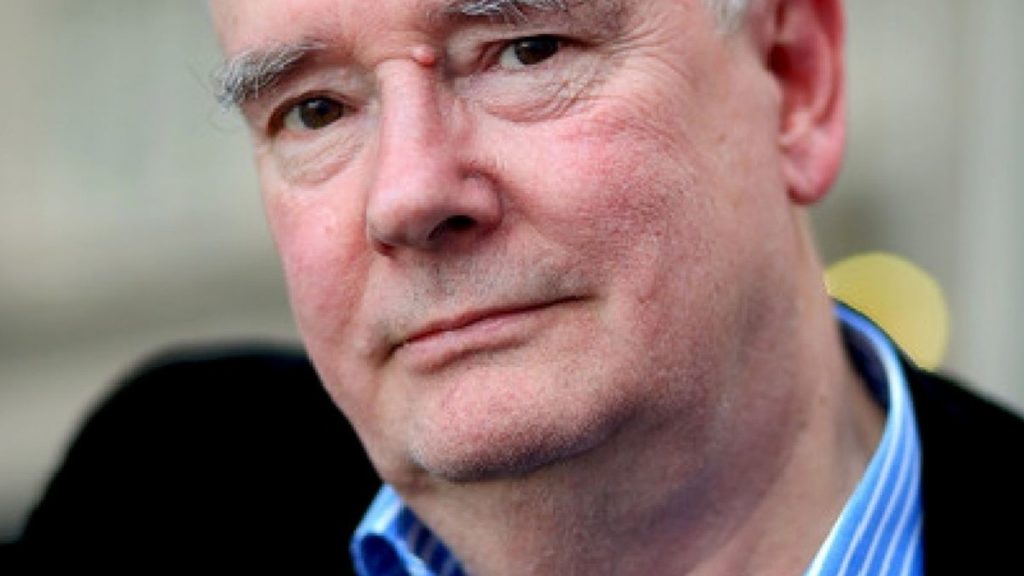Patrick Collister, NDA’s monthly creative columnist, is the Curator of The Caples Awards, Editor of Directory and a friend to Ad-Lib.io.
I can write, think up stuff, I can lead teams. I have awards.
So, when there’s supposed to be a talent crisis, why aren’t agencies queuing up for my services, I wonder?
Could it be because my very first Cannes Lion dates back to 1983?
Before most creative directors were born.
My most recent award was in 2013. Ten years ago, when most creative directors were still in the playground. Pah!
Now, at this point I could embark on several hundred words of rage.
Except Bob Hoffman has written them so much more expressively than I could. HERE.
“People over 50 aren’t creative enough to write a fucking banner ad but they are creative enough to dominate in Nobels, Pulitzers, Oscars and Emmys.”
The numbers would seem to support his accusation that advertising is an industry steeped in intolerance and self-deception.
35% of lawyers (and 72% of judges) are over 50.
28% of doctors.
But just 6% of ad execs.
There you have it, rampant ageism.
Or is it?
Maybe adfolk lose their value faster than other professions for very good reasons.
Like, they can’t keep up with cultural nuances.
Like they run out of steam. It can be demanding. My wife tells me that one year at Ogilvy I was in the office for 32 out of 52 weekends.
Like, they don’t adapt fast enough to change.
(Most creative people recognise the web is where they must ply their trade but staggeringly few know how to code.)
What prompted these musings was the recent death of Jeremy Bullmore.
The former Creative Director and Chairman of JWT was still in harness at WPP aged 91.
He didn’t whinge about ageism.
In one of his notebooks, Leonardo da Vinci wrote: “Iron rusts from disuse; stagnant water loses its purity and in cold weather becomes frozen; even so does inaction sap the vigour of the mind.”
Like Leonardo, Jeremy never stopped learning. And that made him ageless.
He had teachability, which is an attitude rather than an aptitude. It is insatiable curiosity by another name.
Rory Sutherland has it, though a relative youngster at 58.
Many others in the 6% have it.
For instance, the print production guy who wrote a letter to the trade press a few years ago.
He was responding to a letter in the previous week’s mag, in which one of his peers at another London agency had written bitterly about being ‘let go’ after 25 years loyalty.
Our writer expressed sympathy and went on to say that when he first became aware of changes happening, he contacted Adobe.
He didn’t know what they did but he suspected it was interesting and important.
He got that right.
They gave him free training. As a result, he became Head of Production, the agency wised up and Adobe got a new client. Everyone a winner.
Less happily, I once tried to sell Ad-Lib to the CEO of a big trad agency.
I explained how thanks to AI the platform could do in seconds what took a day in the studio.
Working with us, he could cut his clients’ production costs. Think how grateful they would be!
He was aghast. It would put his artworkers at risk.
Anyway, he’s no longer in the job.
I guess he was in his 50s.
Was he a victim of ageism? Or of his own reluctance to move with the times?
For my own part, I was proud to be the oldest Googler in the UK.
Even prouder to be the creative director of Ad-Lib in my mid-60s and older than the founder’s father.
But AI is moving on rapidly from slicing and dicing assets to creating them.
Currently I am immersing myself in the creative possibilities of ChatGPT, Dall-E2 and Midjourney. There could be work in it.
I’m not suggesting that ageism doesn’t exist.
I’m sure it does. But not to the extent many would like it to.
If agencies are at fault, then it is in failing to establish learning cultures. Old dogs really can learn new tricks.
Of course, the training has to be good (a quick plug here for 42courses.com) and the ageing canines have to want to do it.
Judging from what I see in social media, I’m not sure many do.
They like doing TV commercials and posters.
Advertising is said to be a creative industry but if creativity is the ability to be flexible, open-minded, curious and willing to try new things, then many people in advertising aren’t creative.
And that’s their problem, not the industry’s.








